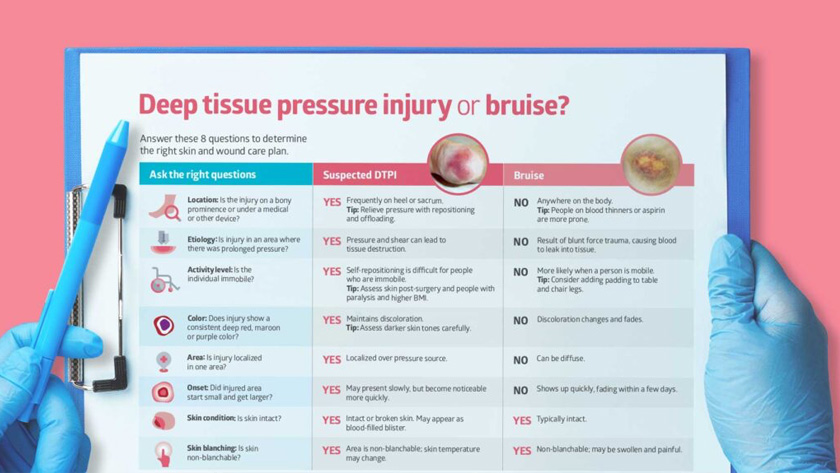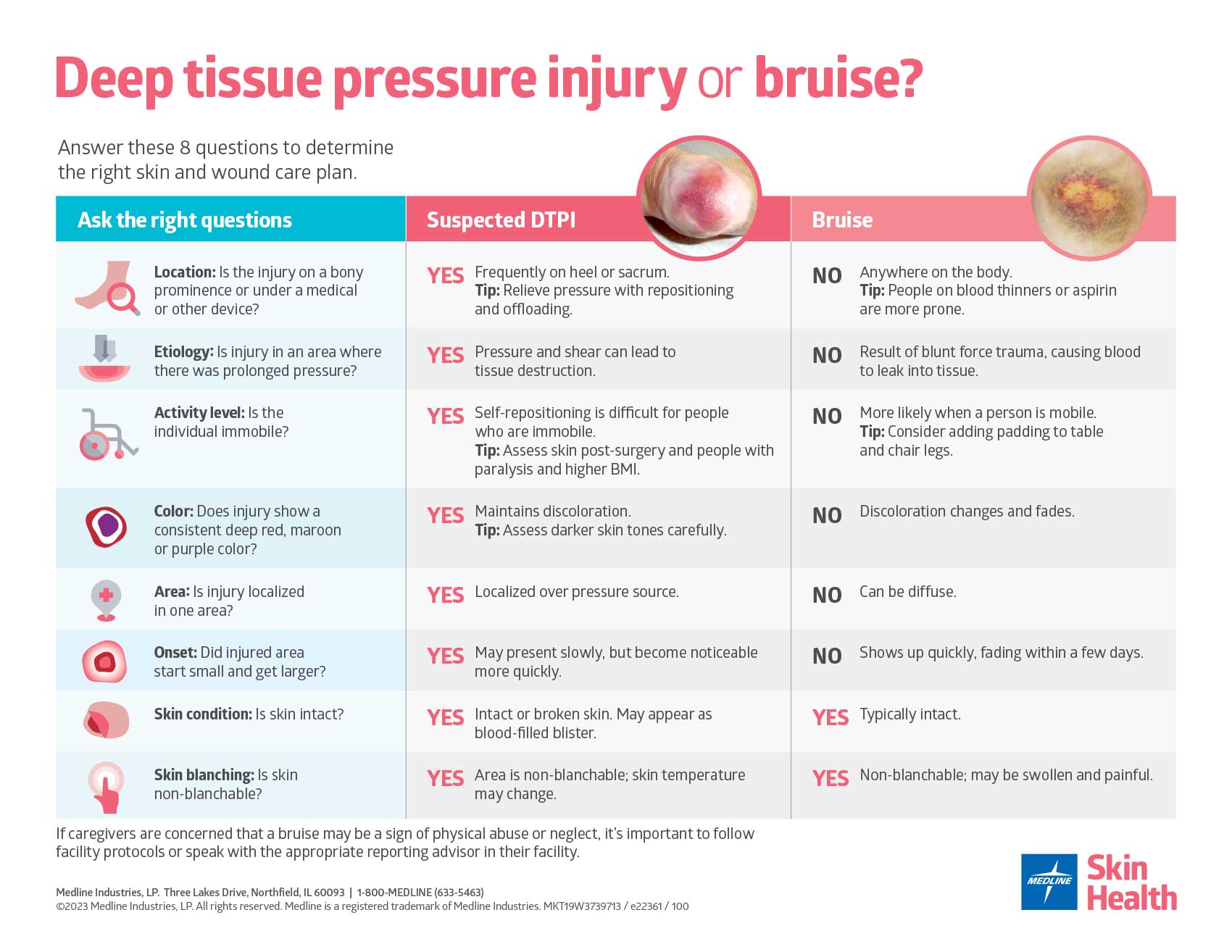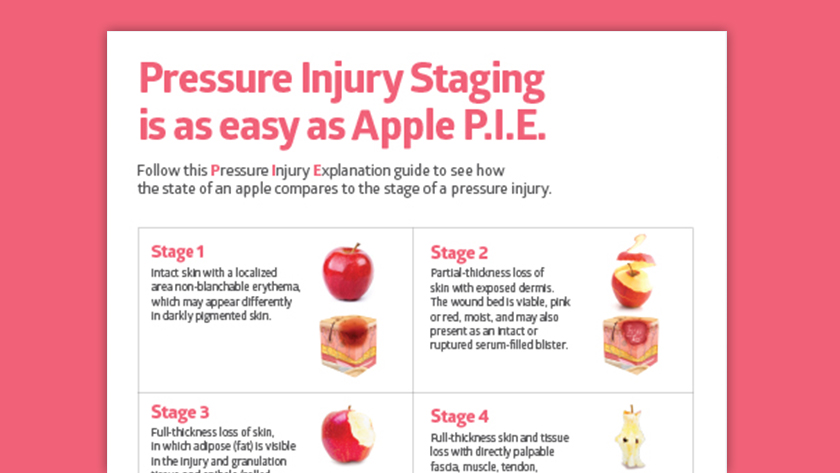Deep tissue pressure injury vs. bruise: Know the differences
Download this decision tree to help determine the best interventions.

Pressure injuries can sometimes be incorrectly assessed as a different skin injury, depending on where it is on the body. For instance, in some cases, what appears to be a pressure injury is in fact incontinence associated dermatitis. Here, we highlight the differences between a bruise and what may actually be a suspected deep tissue pressure injury (DTPI).
It’s important for caregivers to know how to distinguish between these two conditions so they can follow the best next steps. If left without proper care, a DTPI can quickly turn into a stage 3 or stage 4 pressure injury. Documenting the injury will also help establish etiology of the injury.
Asking the right questions can lead to better outcomes
If most of the answers point you to a suspected DTPI, be sure to implement all your pressure prevention strategies and watch for signs of full thickness pressure injury formation.
If caregivers are concerned that a bruise may be a sign of physical abuse or neglect, it’s important to follow facility protocols or speak with the appropriate reporting advisor in their facility.
Download and share this decision tree with your team so they can ask the right questions and help improve skin outcomes.





